Porto.
Design lovers so often start trip planning with an Instagram scroll. Particularly enticing are the pictures from Portugal. Rainbow colored building facades, whimsical tiles (known as azulejos) and images of luscious food and wine have engendered a robust surge in the country’s tourism. While you can’t always trust what you see on the Instagram Explore page, Portugal is an exception. Having recently traveled the country’s popular Porto-Sintra-Lisbon loop, I found all of the technicolor posts just as fabulous in person. They should not be missed by anyone visiting the country.
If you limit your itinerary to those sights, however, you will miss out. Visiting Portugal’s great interiors (if you know where to look) will give you insights into the country’s DNA that you won’t find elsewhere. Read on for some under-the-radar destinations that no design lover should skip. All of these venues are open to the public. In my next dispatch I will share the private homes I visited while there.
First some background. Design in Portugal is complex and a bit of Portuguese history will enhance whatever you choose to add to your undoubtedly packed agenda. Did you know, for example, that once Portugal was the richest country in the world? Yes. During the 15th and 16th centuries the Portuguese were the world’s foremost explorers. Taking extraordinary ocean voyages, they opened trade with India, Africa and Asia to the West and ultimately traveled all the way across the Atlantic colonizing Brazil. Plundering civilizations along the way, these voyagers would triumphantly return to Portugal laden with the spoils from their conquests.
Lisbon rendered in 17th century tiles
The widespread influences from these early journeys are reflected in Portuguese culture and by extension in their homes and buildings. With that in mind, the next time you are confronted by the varied pattern and color throughout Portugal, you will see ties to the exotic marketplaces and souks that those early travelers experienced. Since journeys took years, the design ideas travelers brought back spanned a range of period styles. That’s why it’s not uncommon to see buildings with Baroque, Rococo and Neoclassical influences mixed together. In fine homes and palaces, some ceilings are rendered in planked wood that nod to the haul of a ship. Often such ceilings are elaborately painted with storytelling murals glorifying adventure. Furnishings come from everywhere reflecting a global market mingling locally forged ironwork and hand carved pieces with fine French furniture and Asian antiques. And, because it must have been scary to have loved ones travel the open seas in small boats, it's understandable why those who remained at home often had private chapels and religious artifacts in this traditionally Catholic country.
Porto with a detour in Braga
Today’s vacationers debate whether they should arrive in Porto or Lisbon. Either work but I suggest you land in Porto. As Portugal’s second largest city, it is easier than Lisbon for the jet-lagged traveler to navigate. It also has a marvelous, centrally located hotel that is a perfect introduction to the country’s wonderfully eclectic interiors. The Hotel Infante de Sagres is a 19th century palace listed on Portugal’s National Heritage List that features handsomely carved wood paneling, elaborate ironwork and a staircase lined in shimmering stained glass. It is a contemporary and supremely comfortable interpretation of the Portuguese historicist style. Staying there will set you up perfectly for the great interiors elsewhere on your trip.
Above and below, the Hotel Infante de Sagres
It is also steps away from Porto’s well known sights like the São Bento train station (arguably the world’s most beautiful) and the Palácio da Bolsa
Above, the São Bento train station. Below the Palácio da Bolsa
While in Porto save an afternoon to explore the Casa de Serralves. A bit of a unicorn in Portugal with its laser focus on one style, this villa is an Art Deco masterpiece in the Streamlined Modernism style. The Casa de Serralves was commissioned by the second Count of Vizela, Carlos Alberto Cabral after he visited the 1925 Paris Exposition that lent Art Deco its name. The home’s interior details are by masters such as Edgar Brandt and Jacques Emile Ruhlmann. The gardens, designed to complement the main house, are considered one of the most notable examples of 20th century landscape design. Today the Casa de Serralves is owned by the state and operates as contemporary art museum.
Casa de Serralves above and below, inside with metal gates by Edgar Brandt
Spend an extra night in Porto and take a day trip 45 minutes north to Braga for the Museu dos Biscainhos. Built for an aristocrat and his family back in 1699, this house is a perfectly preserved version of a life well lived in the 18th century. Organized around a central courtyard, as soon as you step inside you are transported back in time. The ground floor is a large entryway constructed to permit carriages and contains a charming stables. A stairway lined in blue and white a leads to the principal living quarters on the first floor. Upstairs are seven exquisite rooms, most arranged to take in views of the villa’s early Baroque gardens. The reception room’s walls are painted in a pink pattern to mimic marble and its neoclassical stucco ceiling is lined with tempura effigies framed in laurel leaf garlands and ribbons. More hand painted flowers, bows and swags adorn the dining room grounded by an azulejos wainscot. The Noble Hall, considered a masterpiece of Baroque architecture, has a quintessential wood plank ceiling elaborately painted in a religious scene. This hall also features a tiled wainscot picturing charming scenes of noble life.
Below, Museu dos Biscainhos
Sintra with a detour in Quelez
Sintra.
There are so many castles and palaces in Sintra that the oft-touted suggestion to make it a day trip from Lisbon is ludicrous. Among the well known fairytale venues are the Palácio de Monserrate, the Pena Palace and the Palácio Nacional de Sintra. If you must slice and dice your visit, be sure to visit the Palácio Nacional. It is the best preserved medieval palace in Portugal and was continuously occupied from the 14th century to the late 19th century where it served as the royal family’s summer home. The palace blends Moorish, Gothic and Mudéjar styles and is filled with all the tile you came to Portugal to see. Also on view are several monumental and elaborately painted wood plank ceilings. The early 16th century Moorish additions to the palace were primarily conceived by King Manuel I in the eponymous Manueline style unique to Portugal.
Below, the Palácio Nacional de Sintra.
Once you tear yourself away from Sintra to head to Lisbon, do not wiz by the town of Quelez as many do. Known as Portugal’s Versailles, the Palácio de Quelez is considered one of the last great European structures designed in the Rococo style. Construction began in 1747 to create a summer residence for King José's brother Pedro who went on to marry his niece Maria and become king himself. The private apartments have some of the finest painted ceilings I have ever seen. When Queen Maria became mentally ill, the palace was used as her discreet gilded cage. The Trellis Room was a particular favorite of hers. Later after the royal palace in Ajuda was destroyed by fire in 1794, the Palácio de Quelez became the official royal residence.
The very Rococo Trellis Room at the Palácio de Quelez, above and below.
Below, an elaborately decorated ceiling at the Palácio de Quelez.
Lisbon with a detour to Azeitão
Lisbon.
In my humble opinion, Lisbon has all the charm of Paris without the nonsense. Delicious restaurants where you don’t need a reservation, five star lodging at an affordable price, tree-lined wide boulevards and parks, first class museums and fabulous shopping abound. For the most part you can go most anywhere without an advance ticket. One major exception is the Mosteiro dos Jerónimos, a UNESCO heritage site and a preeminent example of Manueline architecture. For this venue, I suggest you pay extra for early entry to dodge the line and the selfie shooters, and even then there might be a few of those around. ;)
Below, the Mosteiro dos Jerónimos.
Later, head to the lesser-known Palácio Fronteira. This manor house was built in 1640-63 for João, the first Marques de Fronteira and his wife Madalena de Castro. Still in the original family’s hands, Fronteira is open to the public when its homeowners are not in residence. Visiting offers a rare glimpse at how aristocratic families actually live today. Fronteira is notable for holding the largest collection of 17th century azulejos preserved in situ. There is a Battle Room where tiles depict João de Fronteria fighting a Spanish general. Frescos in the dining room are partially restored so that the contrast shows the care the family takes to preserve the residence. The home is furnished with a supremely comfortable mix of contemporary upholstery and wonderful antique heirlooms from all over the world. My favorite room is at the front of the house where the family enclosed the arches of a veranda with glass to allow for year round use. Just outside the home is a tiled terrace that leads to an Italianate garden complete with grottos, a tiled swimming pool pavilion and multiple fountains. At the end of the terrace is a 16th century shell-encrusted chapel.
Below, the grounds at the Palácio Fronteira.
The covered entry. Sorry but I wasn’t permitted to snap photos inside.
The terrace just off the dining room covered in azulejos, below. The shell encrusted, 16th century chapel is at the end.
Inside the chapel, below.
One of the grottos in the garden.
Forty minutes away from the Palácio Fronteira is the Palacio da Bacalhõa in the town of Azeitão. Deemed one of Portugal’s finest residences from the 15th century, Balcalhõa operates as a winery today. The gardens and garden house that abut a small lake and the vineyards offer an extraordinary serene escape from bustling Lisbon. Within walking distance is a small factory that continues to craft Portuguese tiles by hand that I will cover in greater detail in a later post. It is definitely worth the short stroll.
The lakeside garden house at the Palácio da Bacalhõa, below.
There will be much more to come on Portugal, now that I have finally cracked this post. It was torture for me to push this one out, in part because l have been overwhelmed with executrix duties but also due to the volume of experiences Portugal offers. Let me know in the comments what else you would like to know— be it shopping tips, lodging, museums or a deep dive on certain sights. This country is worth the buzz.
Bon Voyage,
Lynn
PS: For those of you actively trip planning, your lists with links are below. When I said you won’t find these places on Instagram, it was a small fib. There are a few posts out there and of course you will find these venues and others on my Feed, @lynnbyrnenyc. You are following me right?
Under-the-Radar Portuguese Interiors
A Few More With Crowds But Well Worth It
All photos by Lynn Byrne.







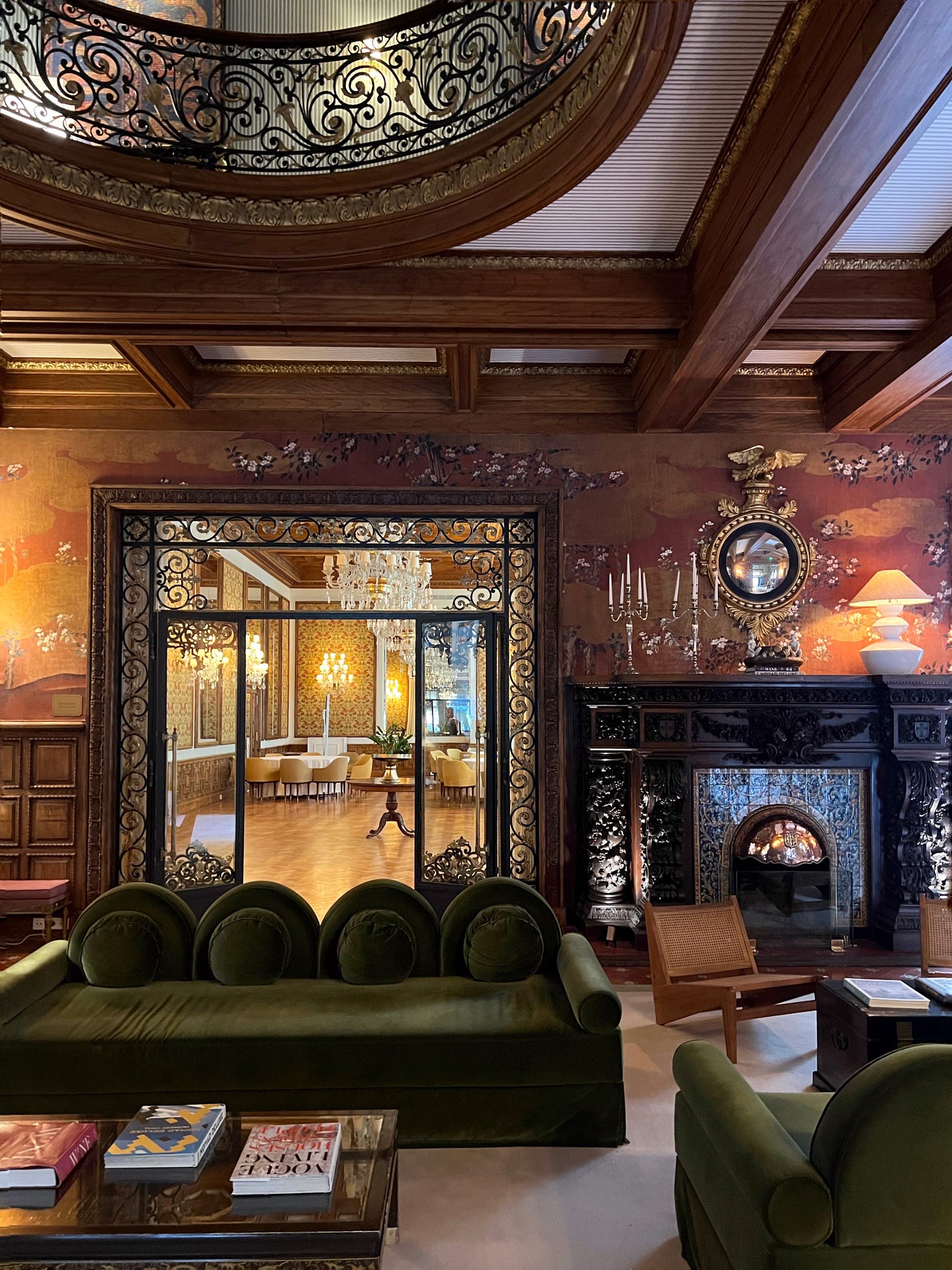
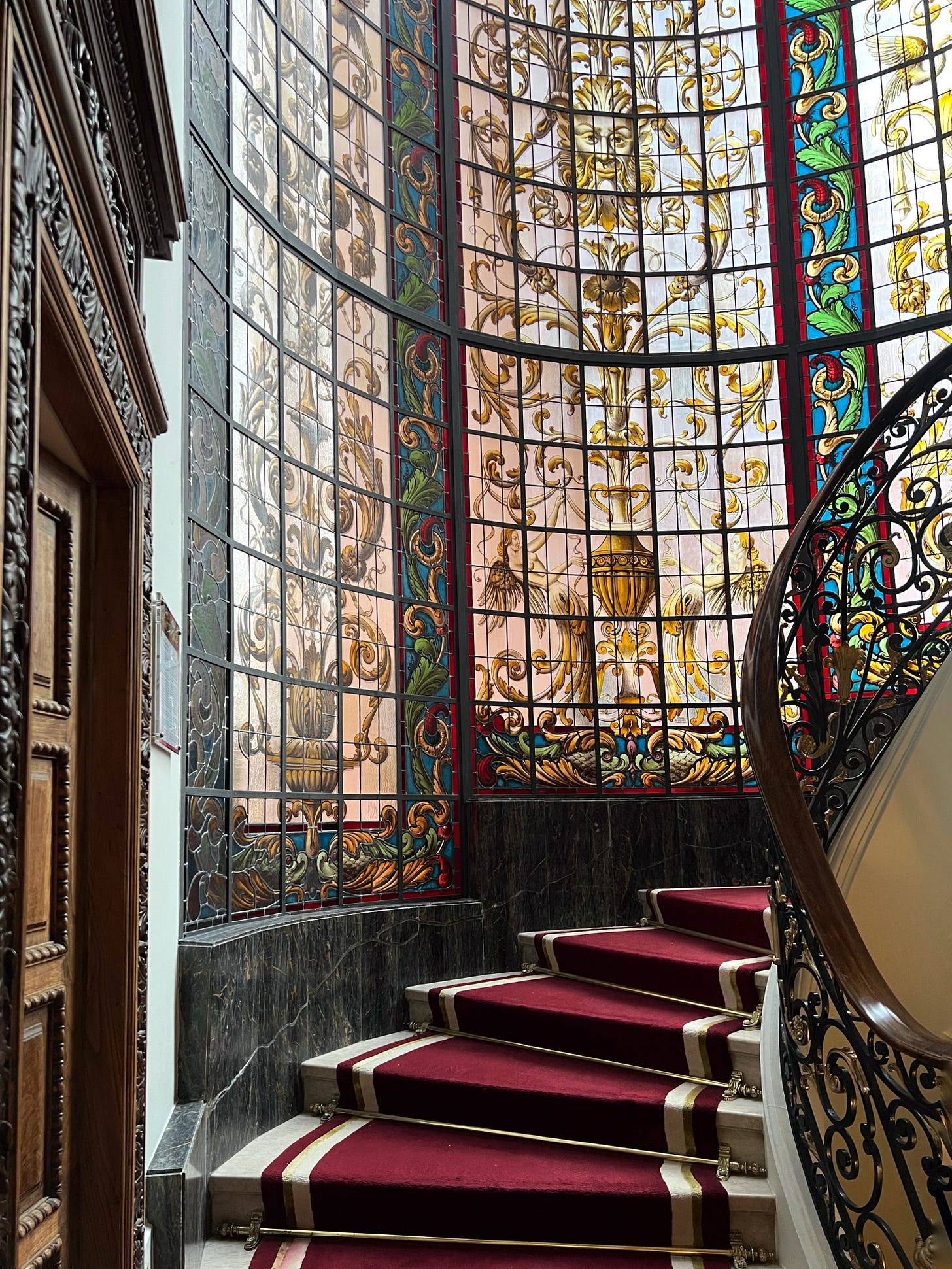
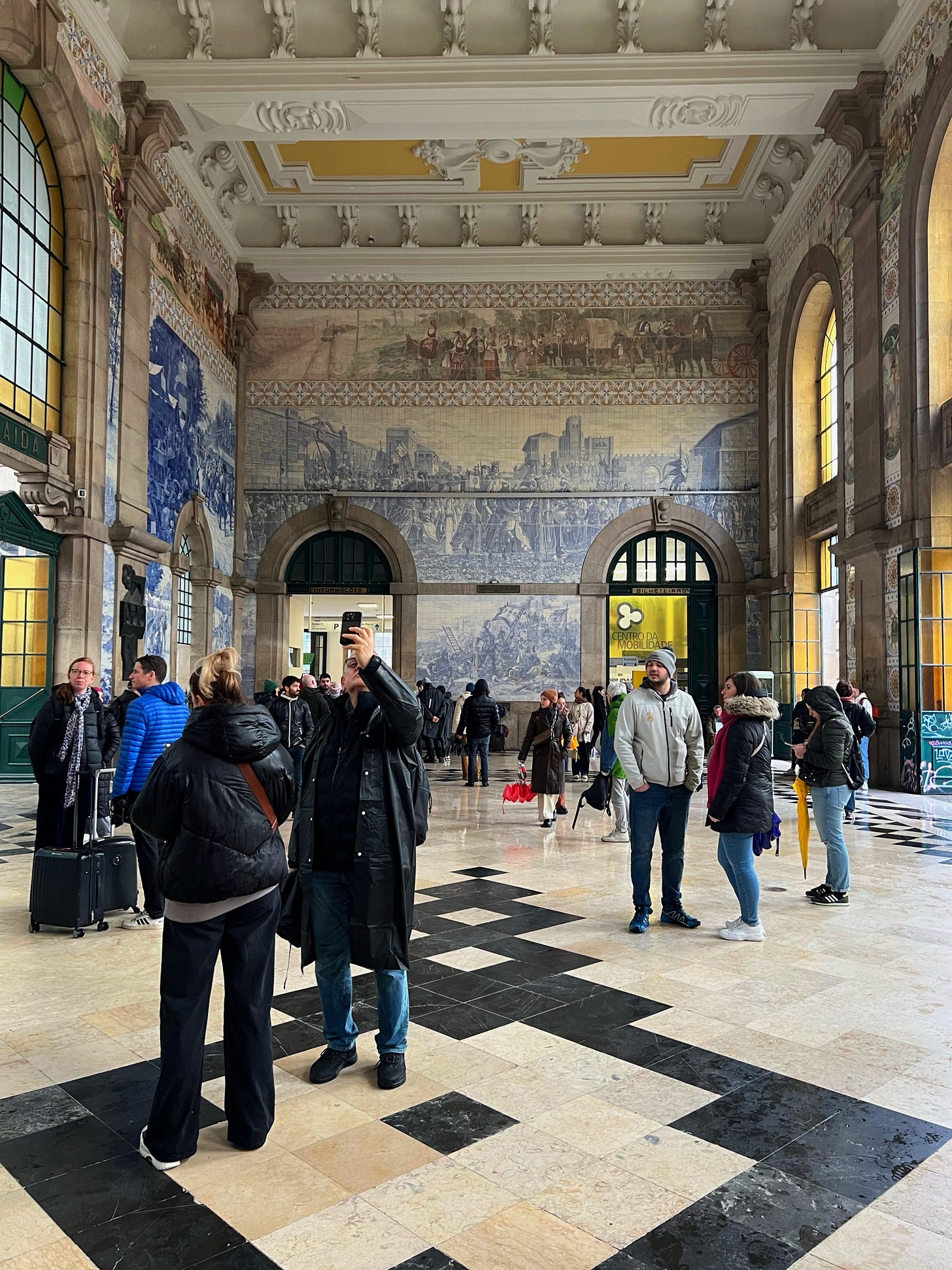
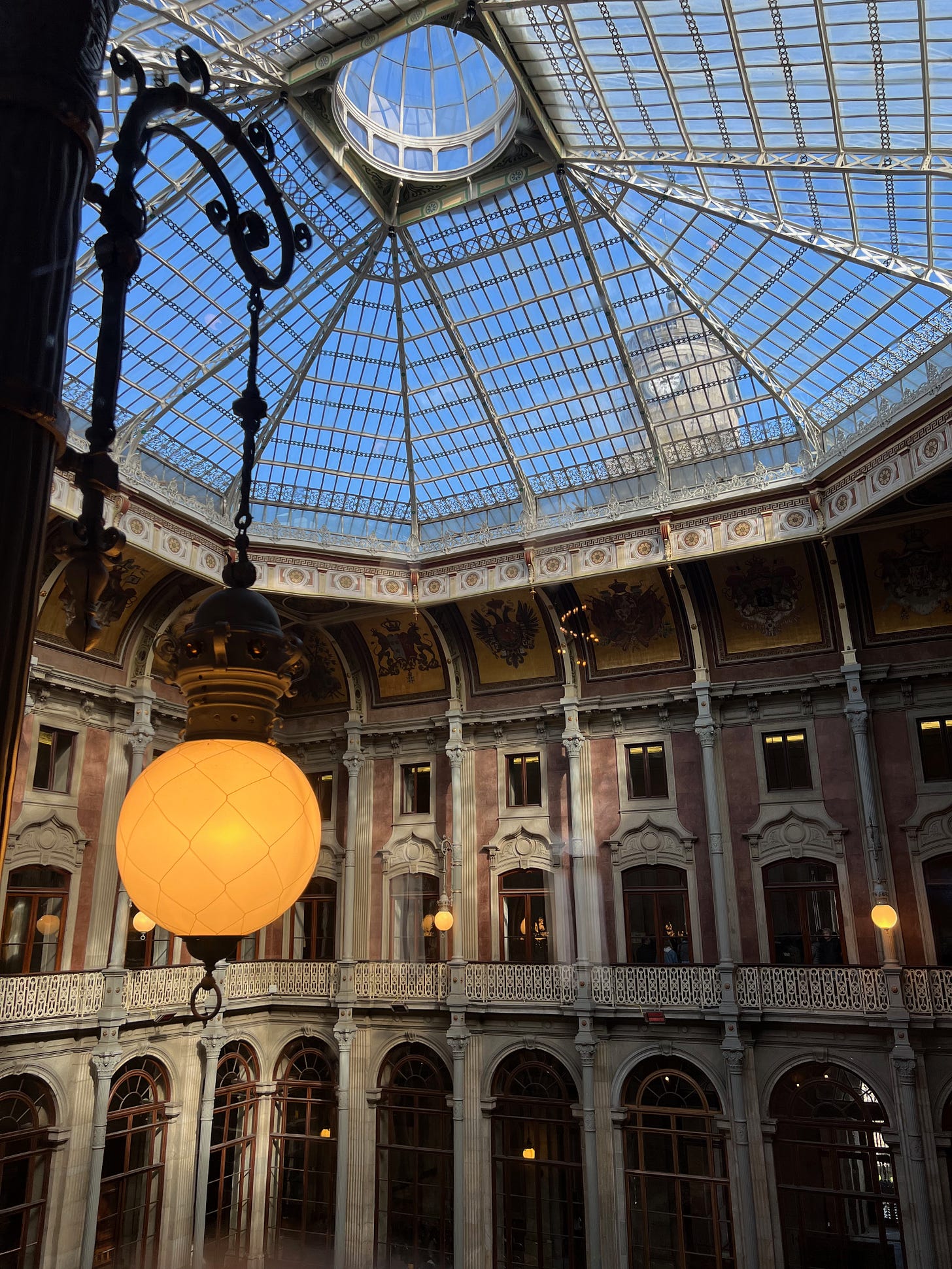


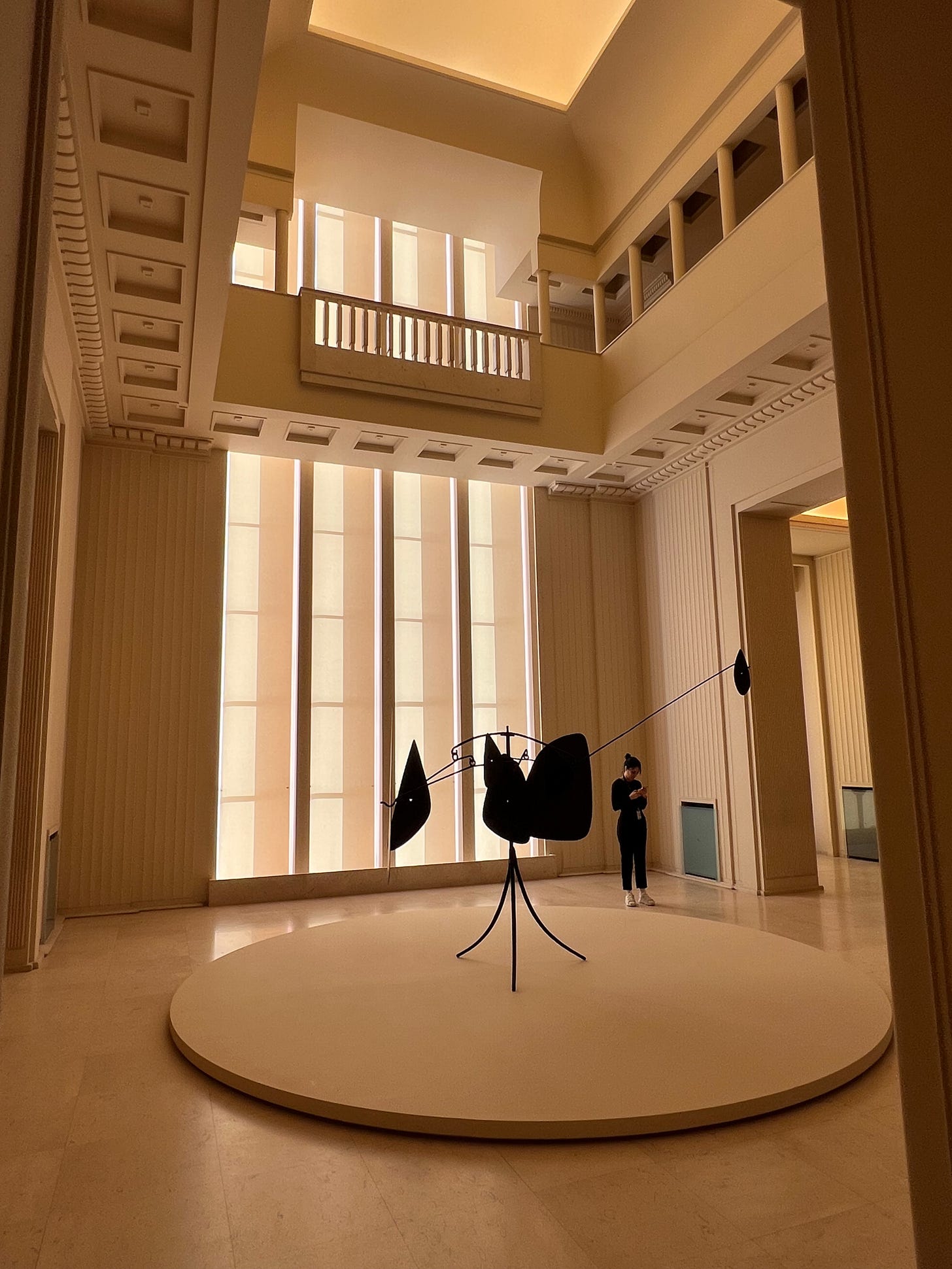

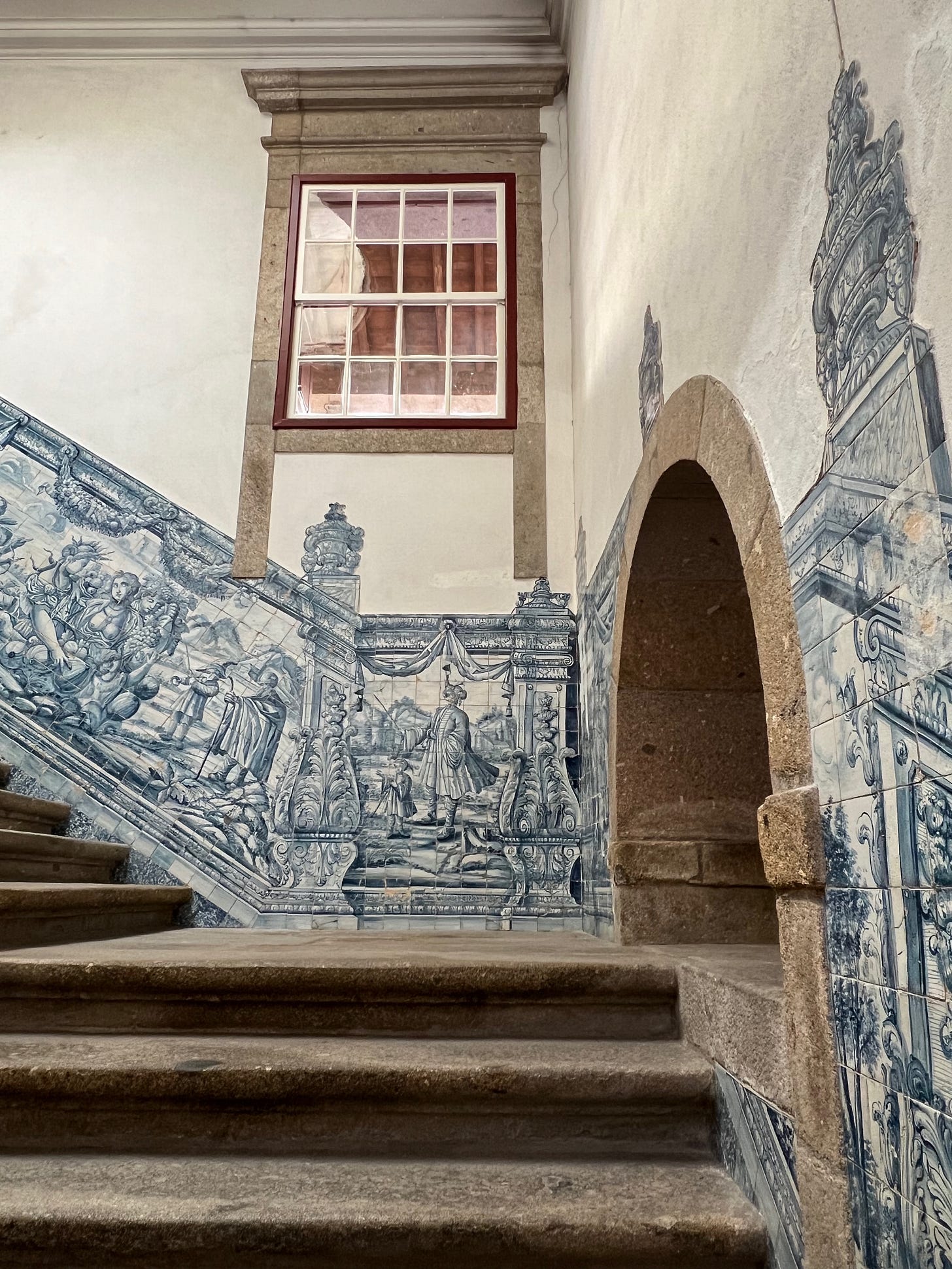

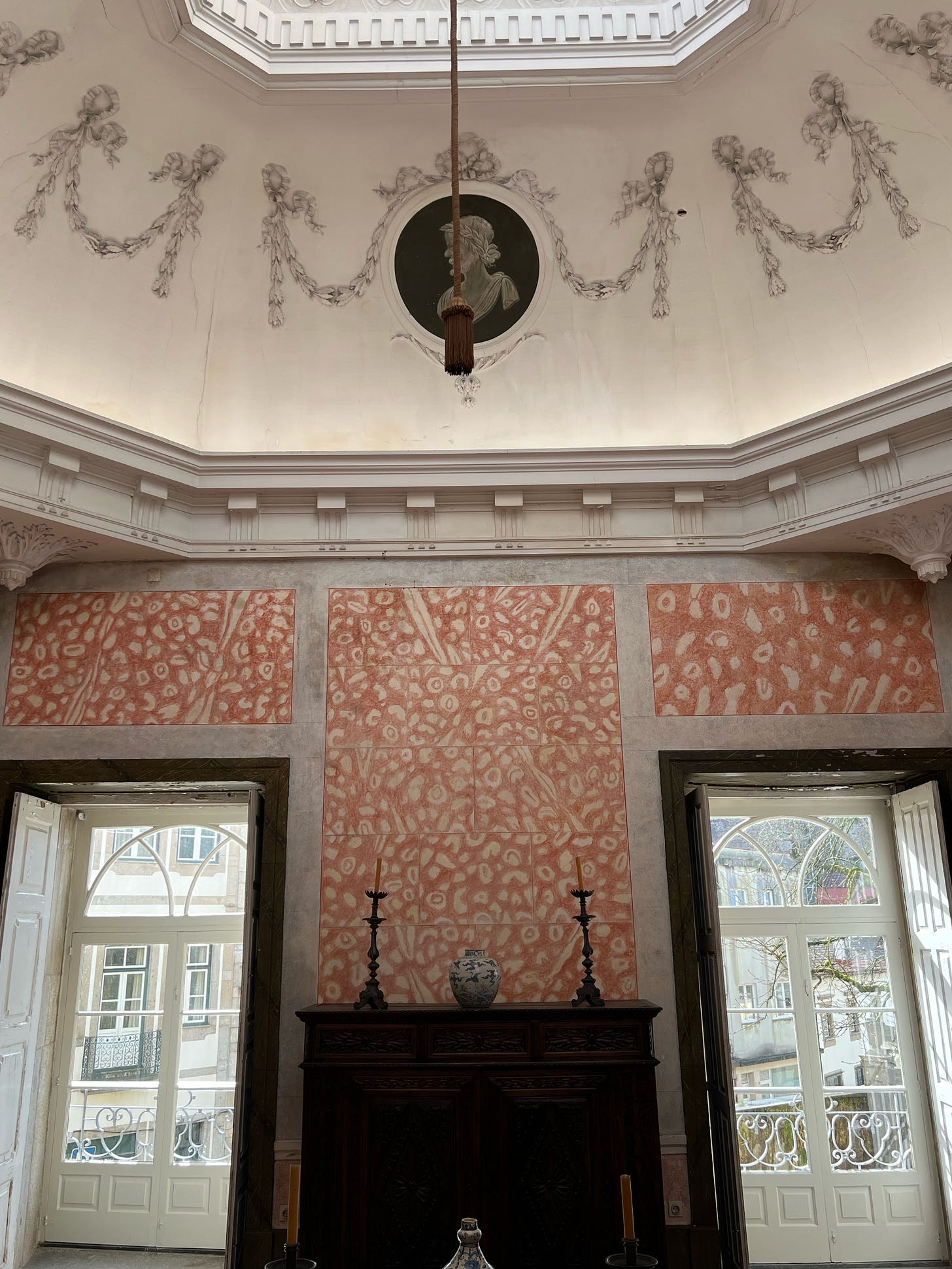

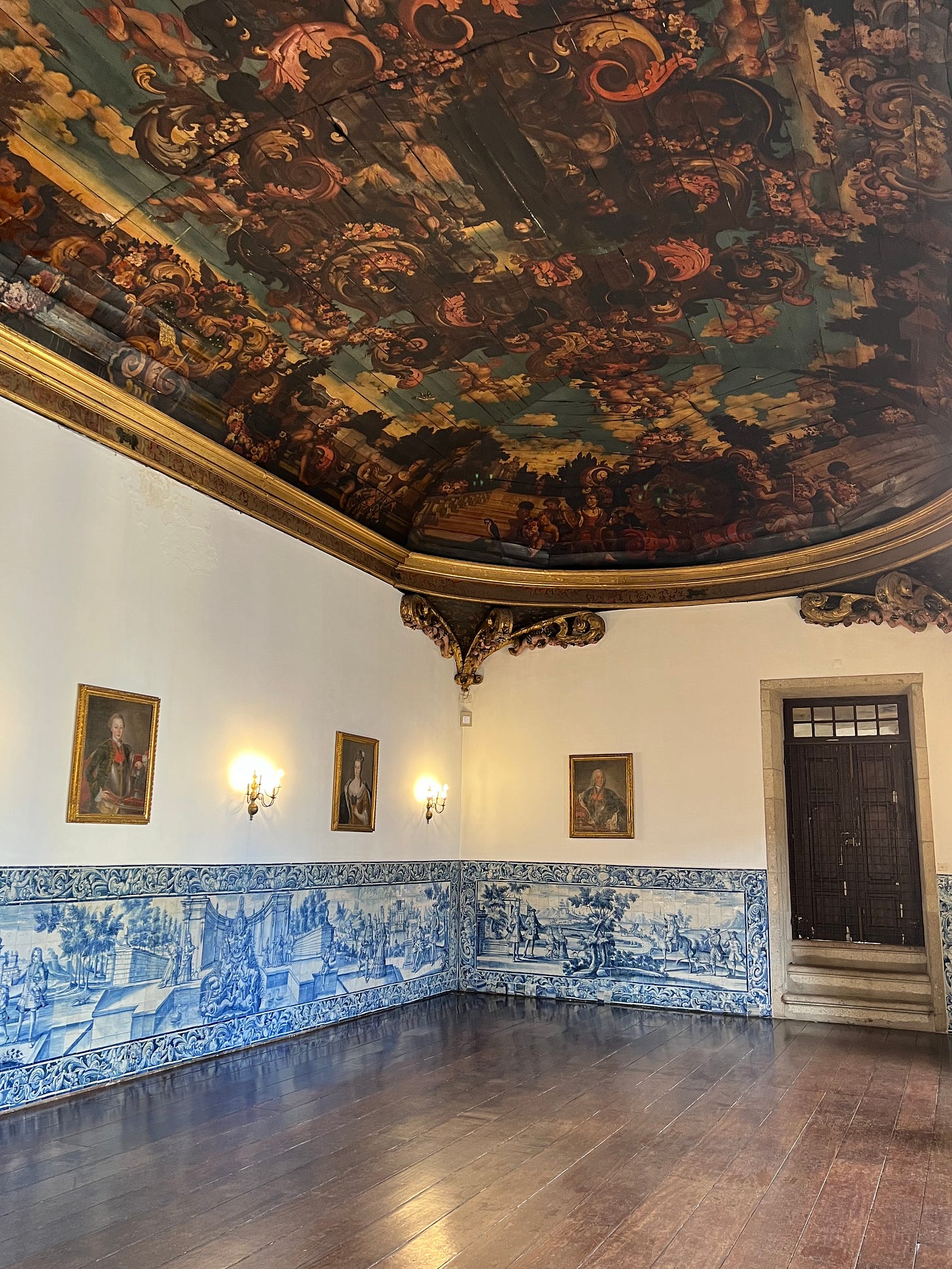

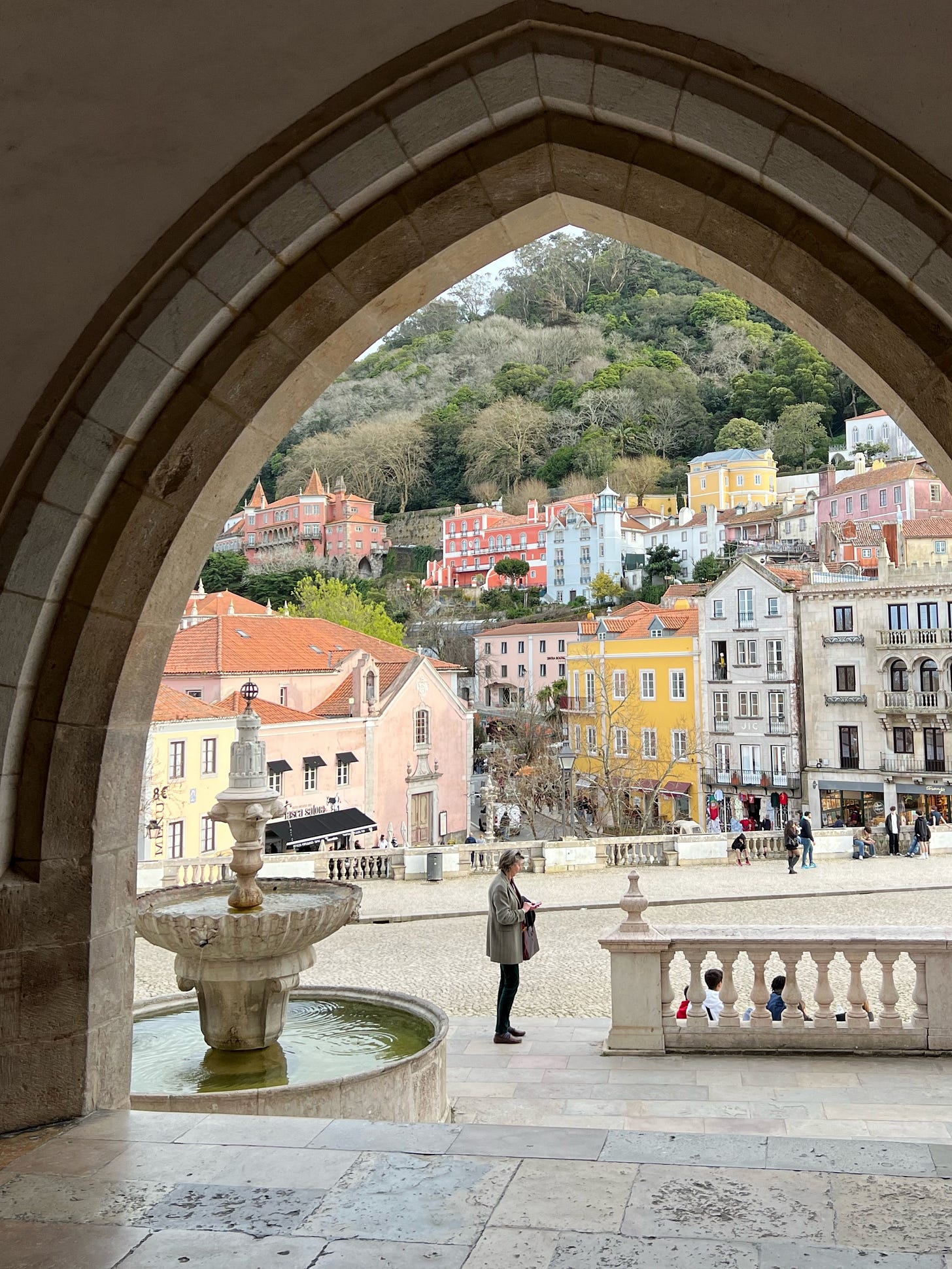



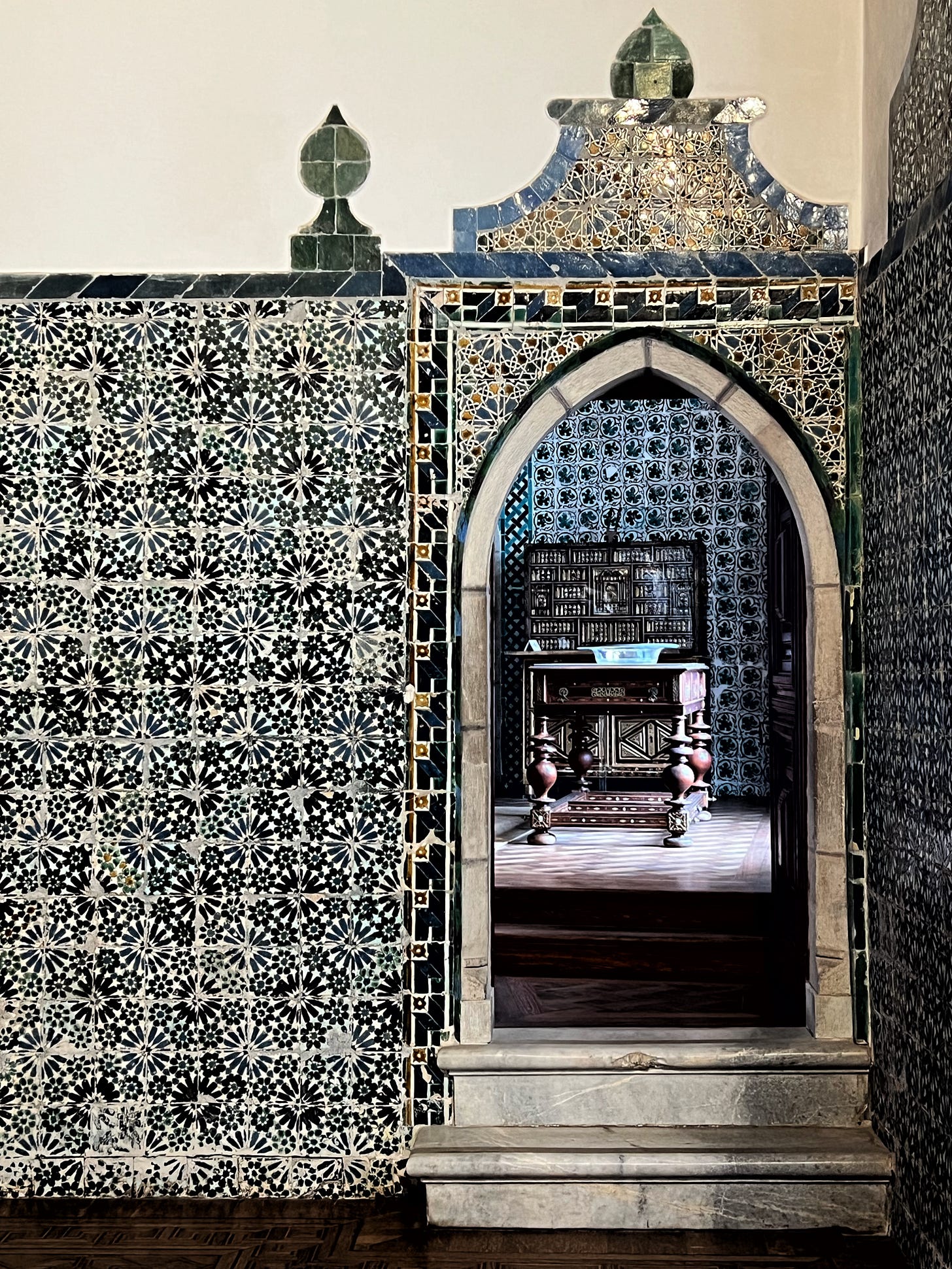


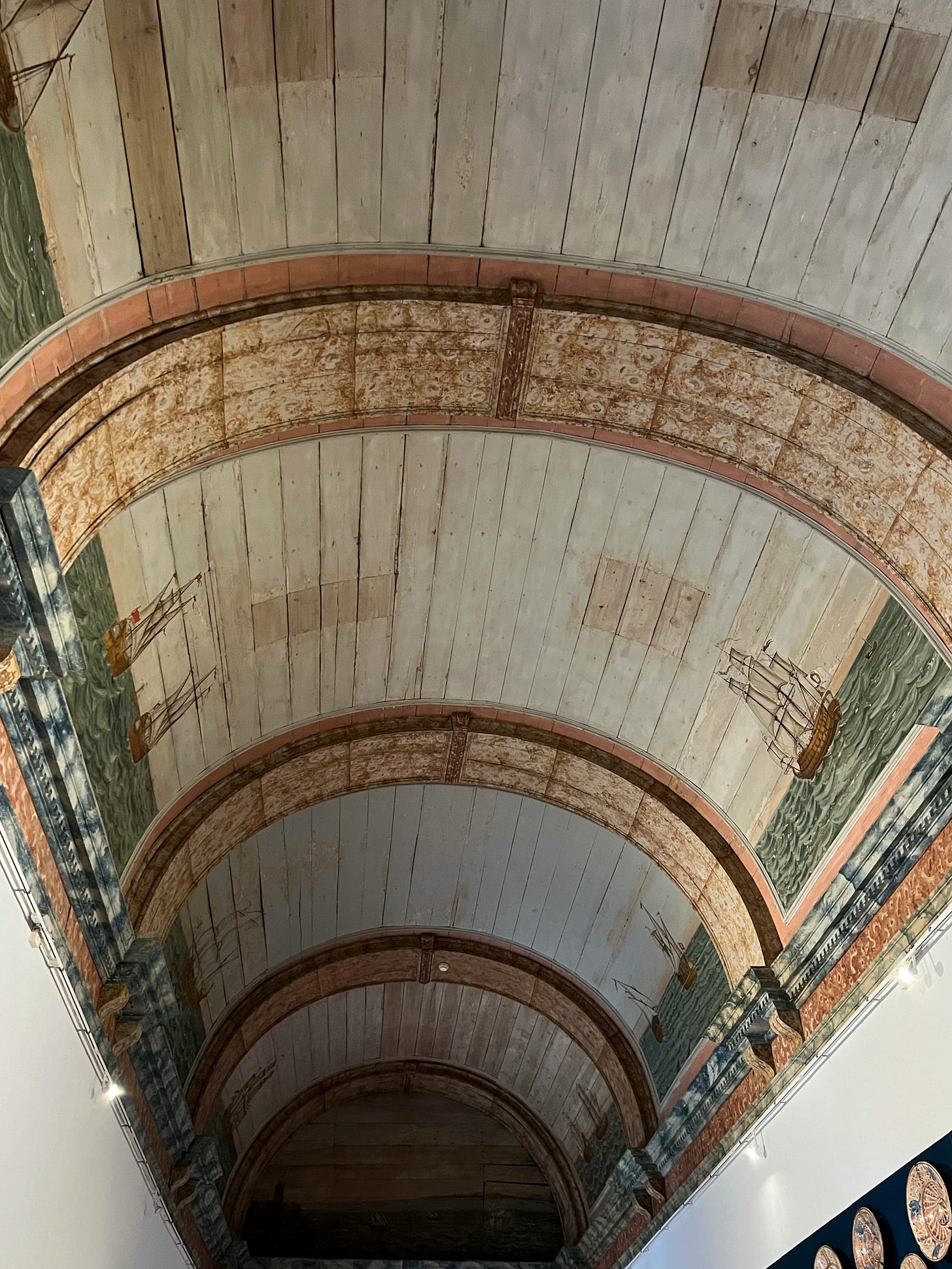

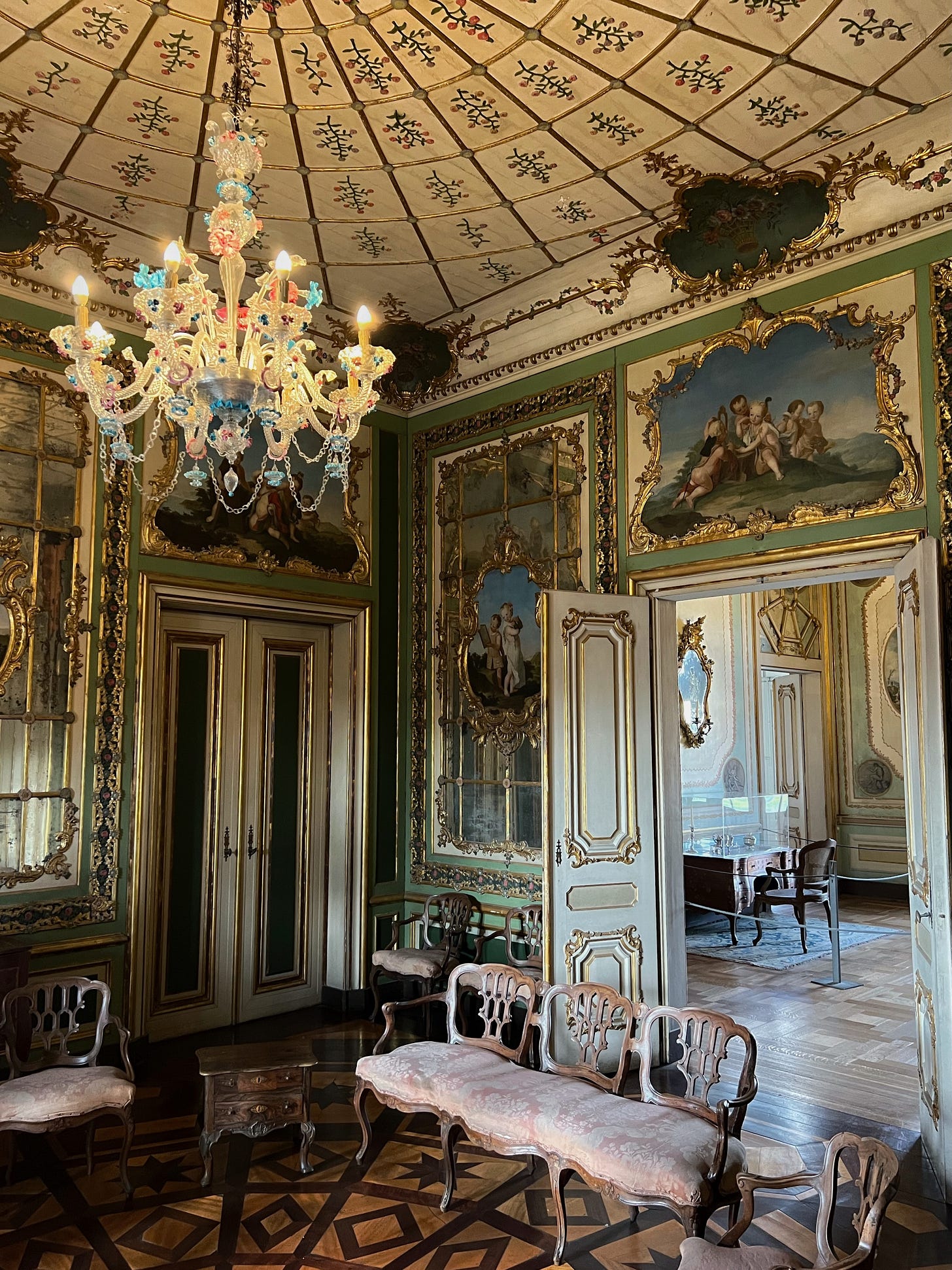
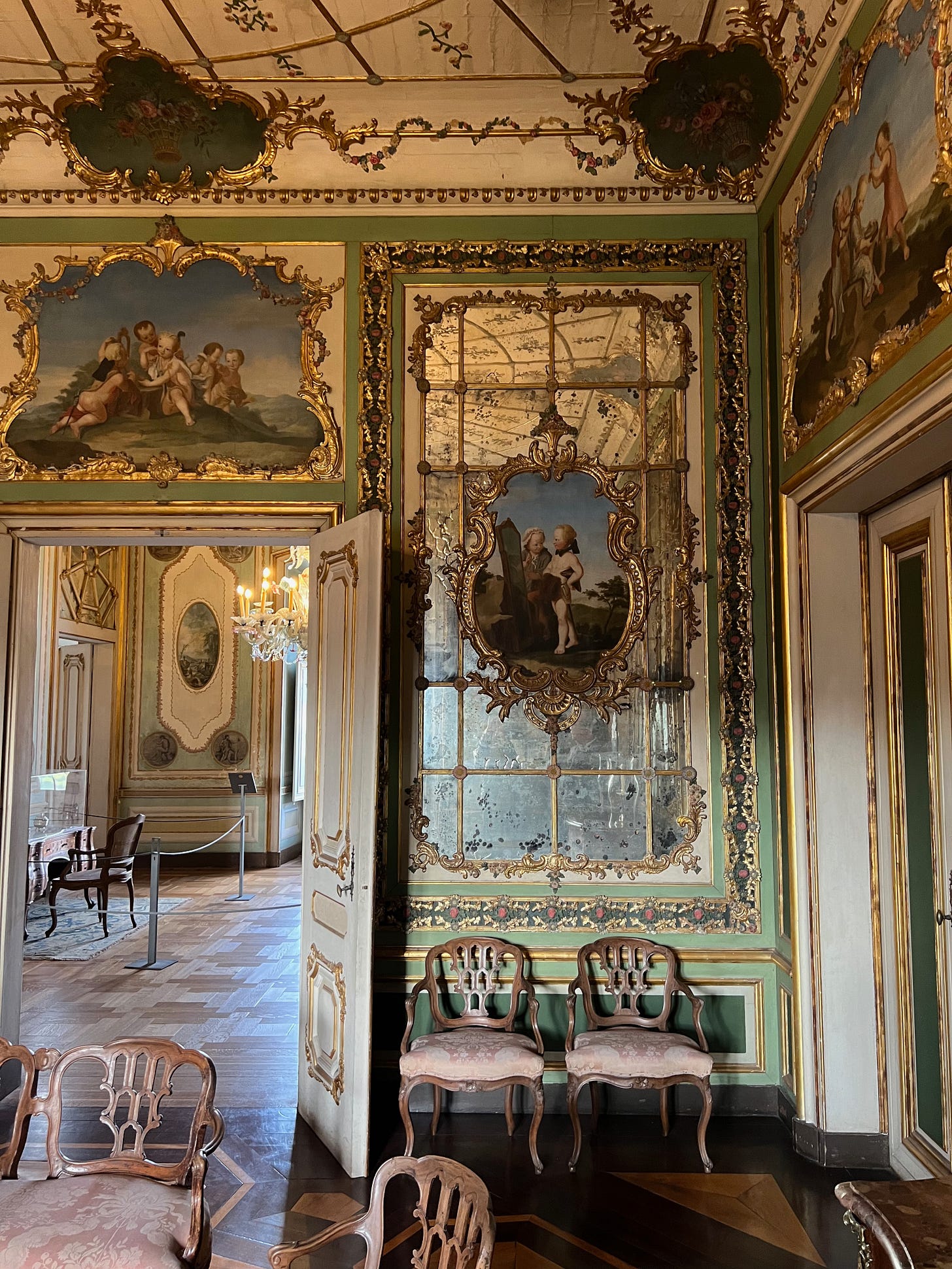










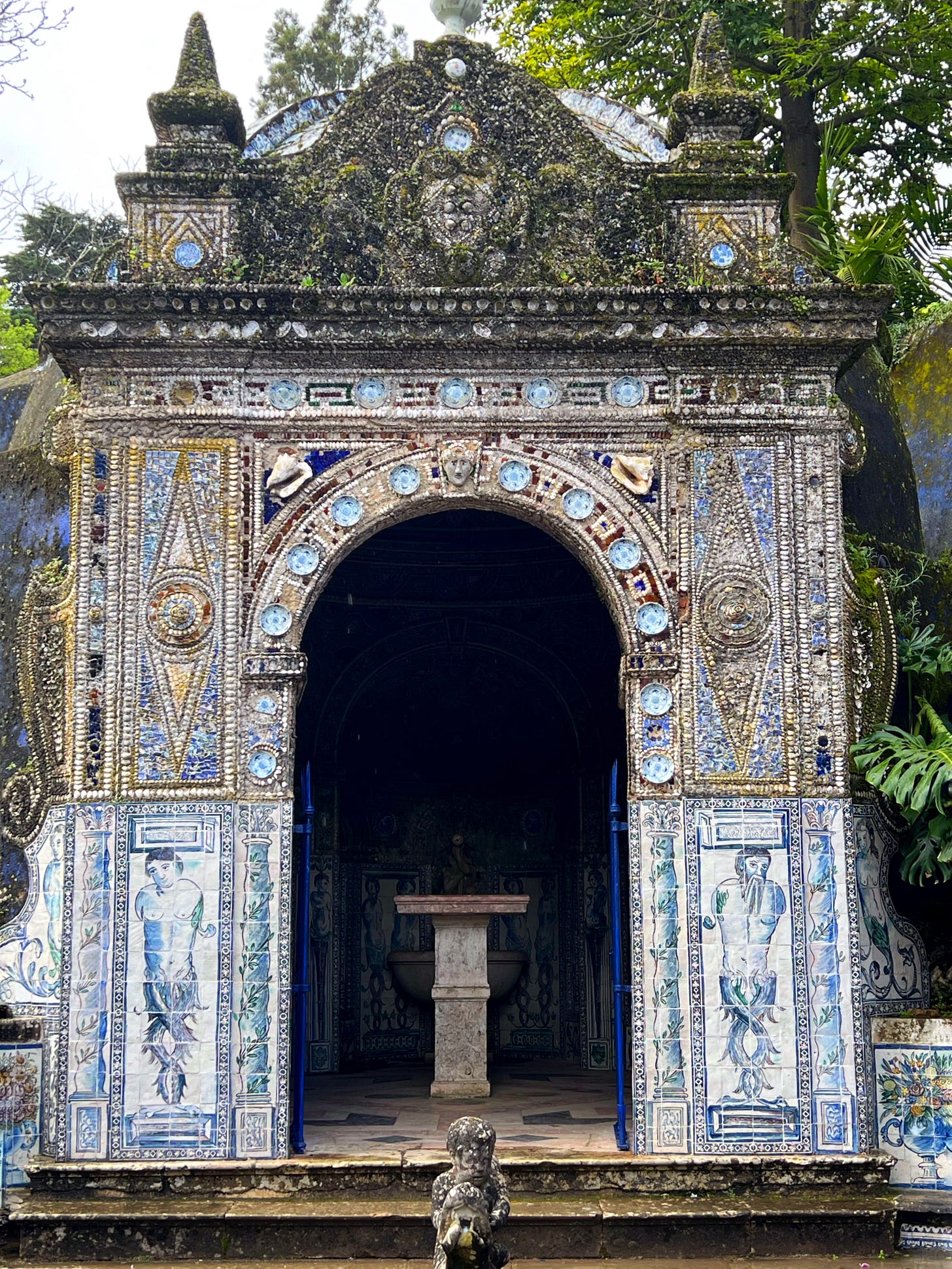
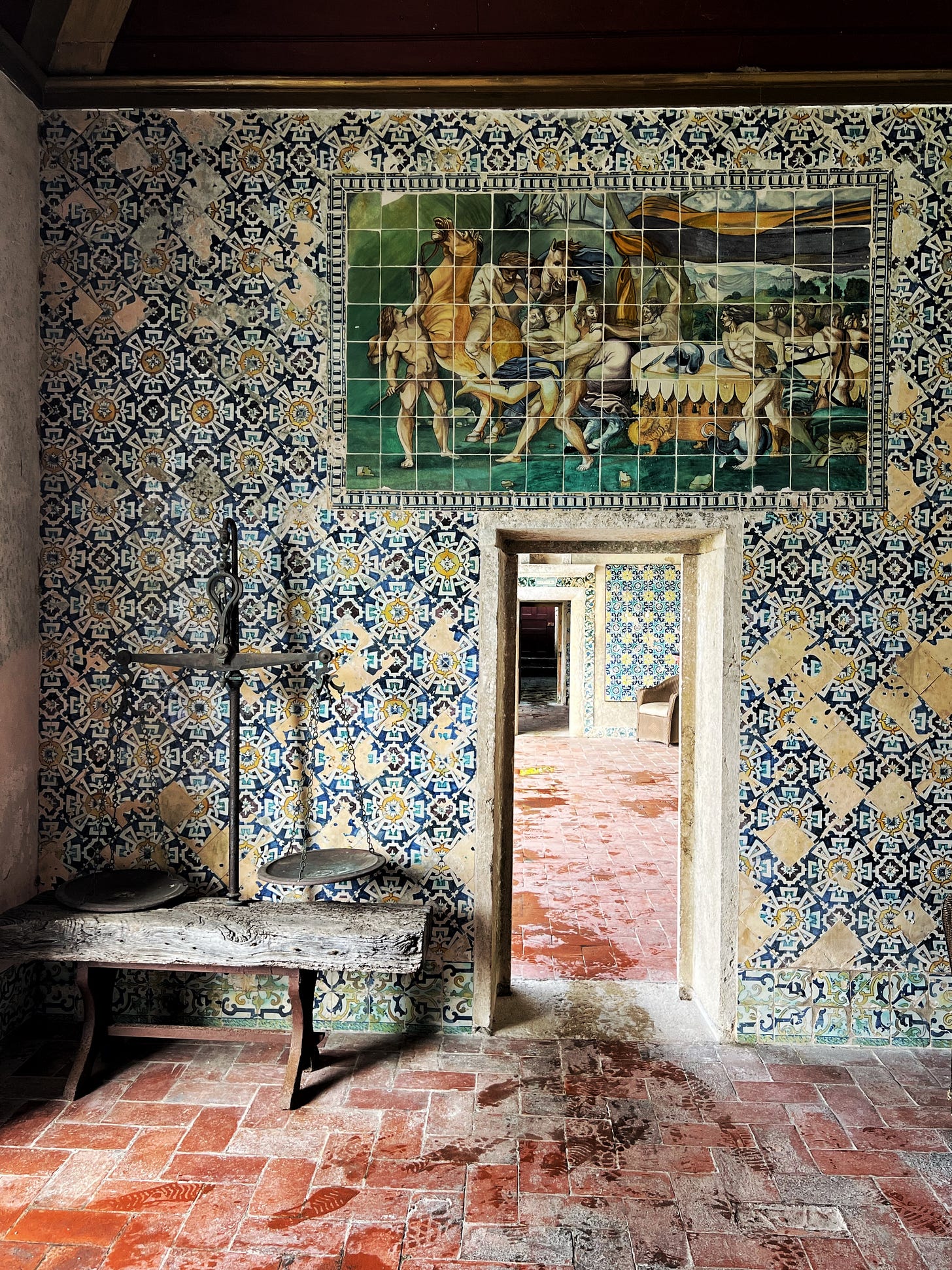
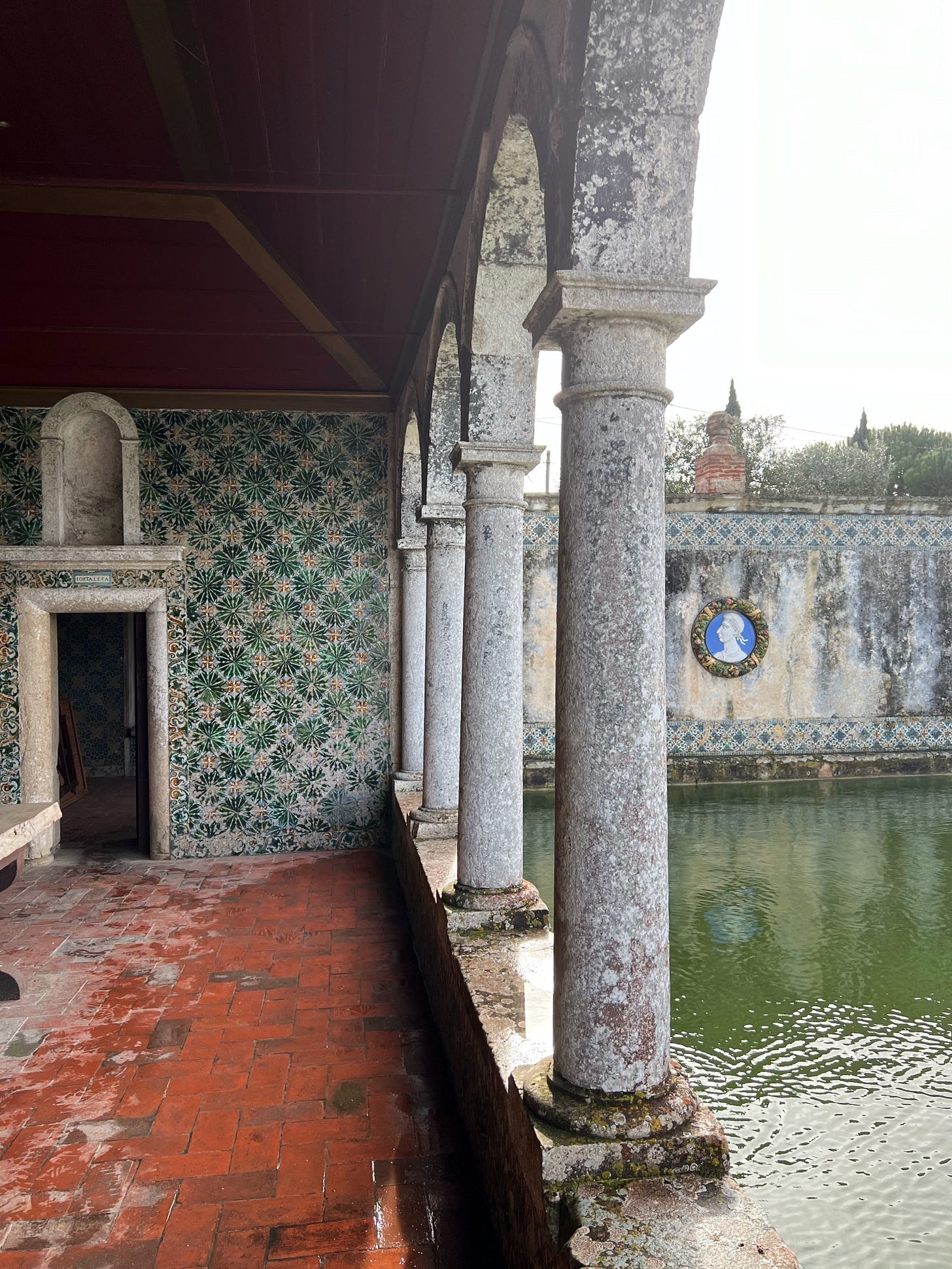
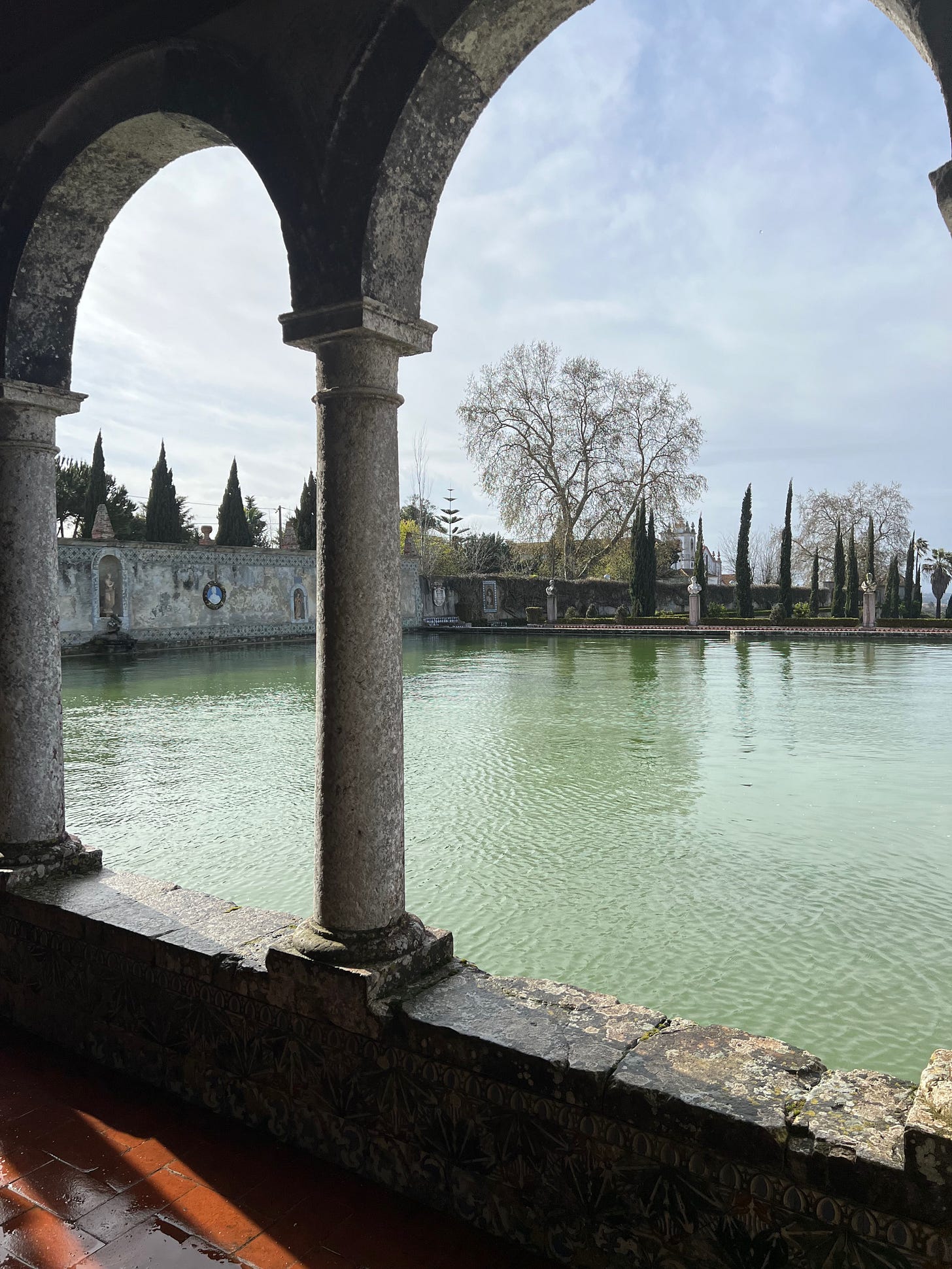
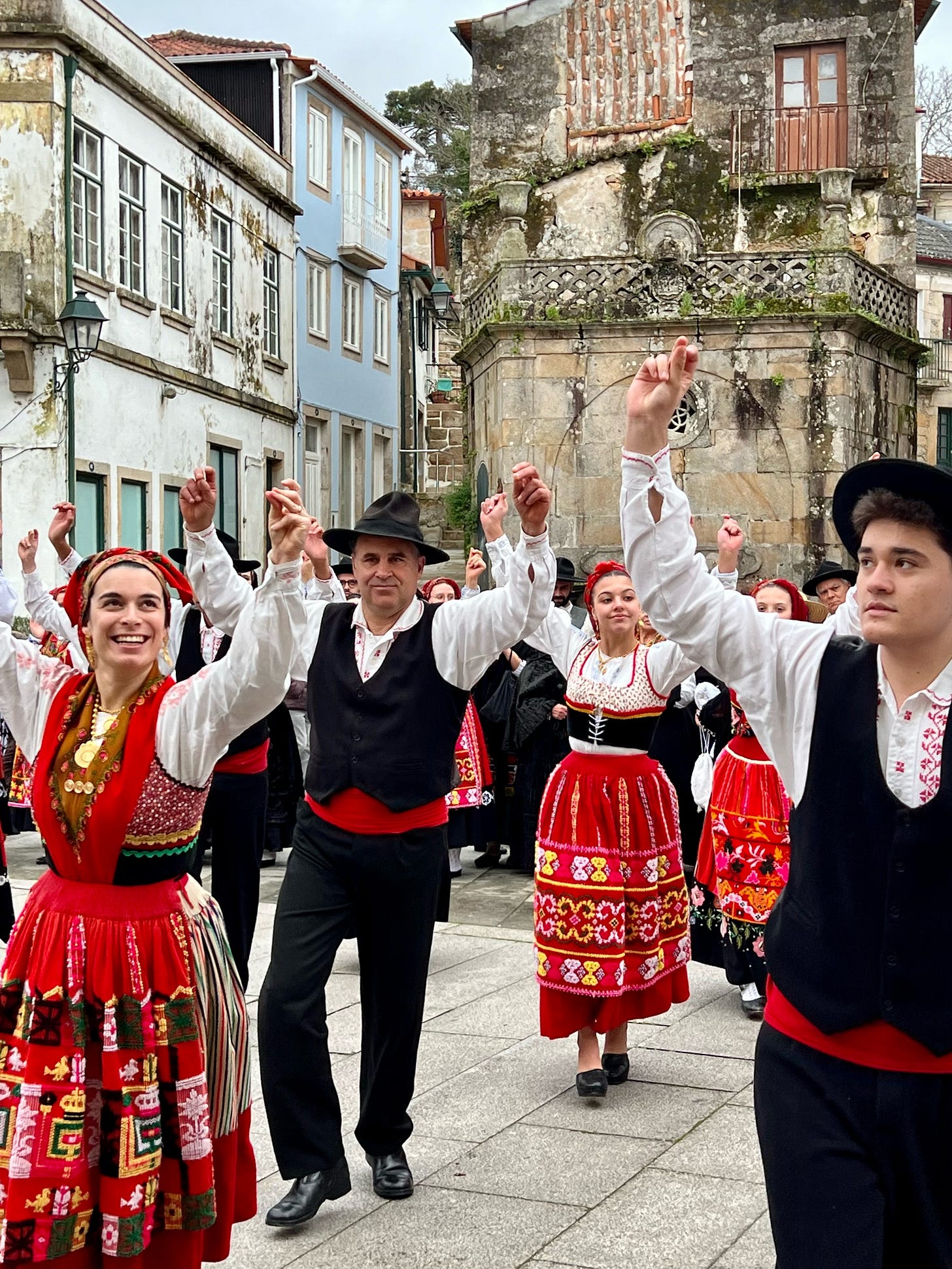
Shopping tips next please!!!!!
Wow!!! Everything is incredible, but how about those tiles!